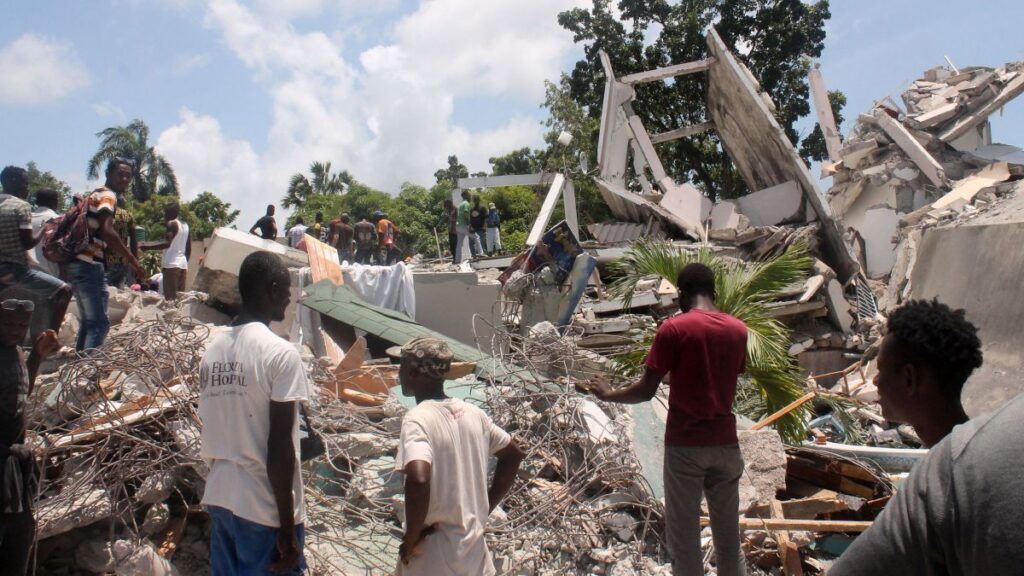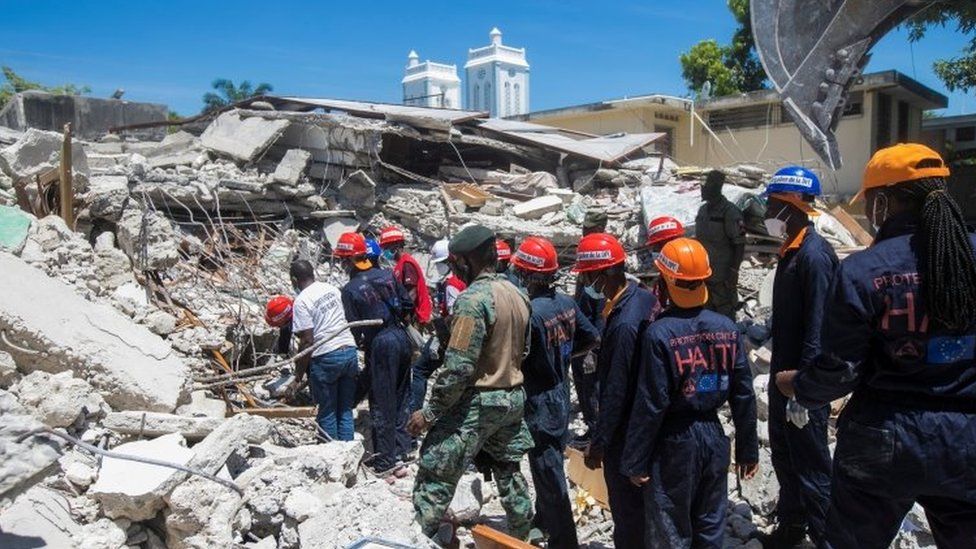HIGHLIGHTS
● In the aftermath of the 7.2-magnitude earthquake that rocked southwestern Haiti, 1,400 people are dead and more than 6,900 others injured, while hundreds more are still missing.
● According to Haitian Civil Protection, more than 37,300 homes have been destroyed and 46,000 have sustained damages, leaving thousands homeless and creating pressing shelter and WASH needs.
● The southern and western parts of the country, particularly the Sud, Grand’Anse and Nippes departments, have borne the brunt of the quake, while some communities closer to the epicenter, yet to be reached and out of contact, are thought to have been completely devastated.
● The dire health situation remains the most pressing concern, as several hospitals have been damaged or destroyed, while those still operating are completely overwhelmed, lacking sufficient personnel and medical supplies.
● Despite Tropical Storm Grace weakening into a depression, the system still threatens to dump more than 10 inches of rain over the areas hardest hit by the earthquake later tonight and through tomorrow August 17, potentially triggering deadly flash floods that could complicate humanitarian response efforts.
● The Government and high-ranking UN officials negotiated humanitarian access for a relief convoy to pass through the main road linking the capital Port-au-Prince to the country’s southern peninsula which, up to now, had been blocked by gangs for months, with further convoys set to deliver various supplies.

SITUATION OVERVIEW
Less than 72 hours after a catastrophic 7.2-magnitude earthquake rocked Haiti, the death toll now stands at 1,400 people and more than 6,900 injured, figures likely to continue increasing as search-and-rescue teams and volunteers scrummage through rubble to find survivors. Several powerful aftershocks followed the initial quake, measuring at or above magnitude 4.0 on the Richter scale, worsening an already dire situation and complicating early search-and-rescue operations.
The southern and western parts of the country have borne the brunt the earthquake, including Les Cayes, Jeremie, Anse à Veaux, Aquin, Cavaillon and Baradères, while some remote communities closer to the epicenter, which have yet to be reached and remain out of contact, are thought to have been completely devastated. According to the United States Geological Survey (USGS), nearly 2.2 million people were exposed to shaking intensity VI or stronger on the Modified Mercantile Intensity (MMI) Scale, with more than 230,000 people living within 15km of the epicentre, per the World Food Programme (WFP).
According to the Haitian Civil Protection General Directorate (DGPC), more than 37,300 homes have been destroyed and nearly 46,000 sustained damages, leaving thousands homeless. The level of damage and destruction to homes suggests that the number of people displaced and homeless will continue to grow over the coming days and weeks, creating significant shelter and water, sanitation and hygiene (WASH) needs in a context where some 19,000 people internally displaced by escalating gang-related violence have failed to receive adequate assistance in these areas.
While initial aerial reconnaissance missions have shown less catastrophic damage compared to the 2010 earthquake, the devastation wrought by the latest quake is merely another blow to a country still reeling from multiple overlapping crises, generating new humanitarian needs that national systems and humanitarian partners will be hard-pressed to meet. In some of the most affected areas, there are already reports of a lack of food, safe water and medicine.
By far the biggest response challenge for humanitarian partners will be navigating the complex security and humanitarian access situation, which creates serious logistical hurdles that make it very difficult to reach affected areas by land from Port-au-Prince. Following successful negotiations, an initial convoy with Government and UN personnel has reached affected areas in the southern peninsula, cut off by the presence of gangs and persistent road blockages for months, with more convoys planned to deliver various humanitarian relief supplies. In this complicated context, humanitarian partners are also exploring alternative routes and modes of transportation to reach affected people as fast as possible, including via sea.
As the number of people injured continues to rise, the dire health situation in the worst hit areas remains the most pressing concern, as several hospitals have been damaged or destroyed, while those still operating are completely overwhelmed, lacking sufficient personnel and medical supplies to respond to growing health needs. In the context of the COVID-19 pandemic, the displacement of thousands of people poses additional health risks as physical distancing, screening and treatment of COVID-19 will be a significant challenge in a country where less than 1 per cent have received their first jab of the COVID-19 vaccine, with vaccinations against COVID-19 having only just started with arrival in mid-July of 500,000 Moderna doses. There is risk of another wave of COVID-19, particularly if the delta variant of concern is introduced.
While Tropical Storm Grace has weakened into a depression, heavy rains and life-threatening floods still threaten to further complicate relief operations in a complex security environment which already constrains humanitarian access. A Tropical Storm Watch is currently in effect for the entire coast of Haiti, as national authorities have been working to mitigate additional exposure and risks to those affected by the earthquake as the system passes over southwestern Haiti. Despite Grace’s current disorganization, the US National Oceanic and Atmospheric Administration (NOAA) predicts that the system could still dump more than 10 inches of rain over the areas hardest hit by the earthquake between 16 and 17 August.
Prime Minister Ariel Henry has declared a one-month national state of emergency, requesting specific assistance in search-and-rescue operations, with all additional requests for support contingent upon the findings of ongoing damage and needs assessments. Offers to support national response efforts continue to pour in from governments across Latin America and the Caribbean and the UN system is working closely with the Government and other actors to ensure an efficient, well-targeted and principled humanitarian response for those most in need.

COMMENTS